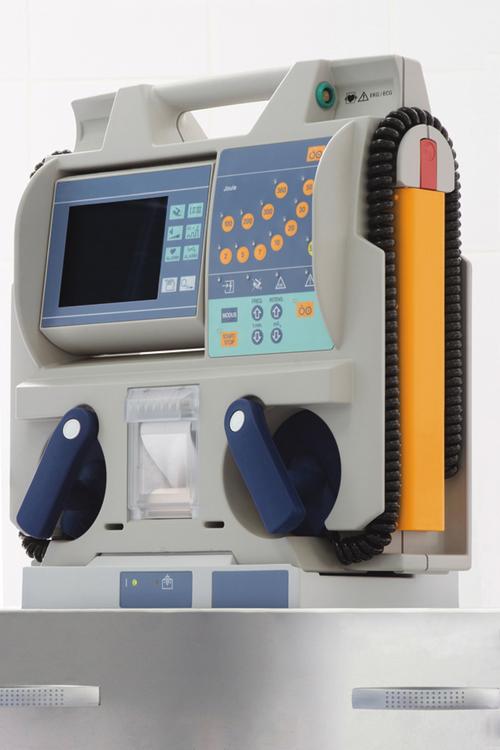Medical device designers are constantly facing new challenges, stemming from rapid changes in the healthcare regulatory and care delivery landscape. Fortunately, designers also have multiple materials resources.
June 17, 2016
Today, medical device designers must consider a wide range of requirements. These are arising from new regulatory mandates and macro trends related to improving patient outcomes, containing healthcare costs, and adopting more efficient care delivery models.
A common thread linking all these drivers is the need for the sustained, high performance of medical equipment. To ensure that these costly devices perform optimally out of the gate and over the long term, design engineers need to consider two factors. First, there is growing demand for lighter-weight, ergonomic equipment to support the move from traditional acute care settings to outpatient or home care. Medical devices used outside the hospital must also be strong and durable, but easy to move and maneuver.
Medical equipment design engineers need to select appropriate polymers and follow leading design and molding practices to meet growing demands for lighter-weight, ergonomic equipment that must withstand frequent use of harsh disinfectants.
(Source: Thinkstock, courtesy of PolyOne)
The second issue is the increasing use of harsh disinfectants to combat hospital-acquired infections and meet reimbursement requirements issued by the Centers for Medicare and Medicaid Services. Over time, these chemicals can cause the polymer housings and other components of durable medical equipment -- such as respiratory devices, defibrillators, and monitoring devices -- to become brittle and crack, which can interfere with their operation.
By selecting appropriate polymers and following leading design and molding practices, designers and engineers can find solutions to these challenges and add new value to their products.
Replace Metal with Long-Fiber Composites
A proven way to reduce medical device weight is to replace metal in structural components with injection-molded, fiber-reinforced plastics. Long-fiber composites combine high levels of stiffness, strength, and toughness in a single material, making them appropriate for demanding structural and moving parts such as frames, gears, and stands. Compared to steel and aluminum, long-fiber composites offer significant weight reductions of up to 80% and 45%, respectively, along with opportunities for part consolidation.
Best practices for injection molding when designing with these materials include:
Wall thickness: To maintain uniform cooling and shrinkage, all walls should be the same thickness, except for ribs, bosses, snap-fits, and interlocks. Make transitions using rounds or radiuses, and to optimize weight-out, use the thinnest walls the application can support.
Rib design: Ribs should be spaced three times the nominal wall thickness at minimum. Maximum height should be about 2.5 times the nominal wall thickness. The round located at the base of a rib should be 25% of the nominal wall thickness, and all ribs should have a draft angle from 1/4 to 1 degree.
Structural hole design: Holes used in a structural support should be separated by at least one hole diameter. They should be placed at a distance from the outside wall equal to two times the hole diameter, and at a distance from the inside wall equal to one times the diameter.
Minimize Stress Cracking with Chemically Resistant Polymers
When a plastic component is subjected to long-term stress, force is transmitted along the polymer chains, which orient toward the direction of the pull. This causes deformation, or creeping, which can lead to crazing and, ultimately, cracking and breakage. Chemicals exacerbate this process, causing environmental stress cracking.
To combat these issues, careful material selection, part design, and processing decisions must be made.
READ MORE MEDICAL ARTICLES:
Choosing a polymer that is chemically resistant to strong disinfectants such as alcohol, hydrogen peroxide, and ammonia can minimize the development of stress cracks. For example, lab tests have shown that rigid vinyl and some co-polyesters outperform many other polymers -- such as blends of polycarbonate and polybutylene terephthalate (PC+PBT) and of polycarbonate and polyethylene terephthalate (PC+PET) -- commonly used in device housings. Rigid vinyl, which is inherently resistant to chemicals, has proved its value in consumer appliances (resistant to laundry detergents and stain removers), fluid handling (resistant to water treatment chemicals), and automotive (resistant to fuel additives). Also, consider new blends of PC and acrylonitrile-butadiene-styrene (ABS) formulated to offer better chemical resistance to disinfectants.
Molded-in stress, or residual stress from the molding process, can set up a material for later cracking. Material viscosity is a factor. Highly oriented polymer chains are considered to be in stress, while viscous resins such as co-polyester, polyphenylene sulfide (PPS), and liquid crystal polymer (LCP) mold with lower stress due to their high flowability.
Reducing right angles helps minimize the potential for crack propagation. Wall thickness can also have an effect, so it is important to avoid variations in thickness. The location of gates is another factor. Always gate thick-to-thin for optimal fill patterns and the ability to pack the mold fully. Finally, following standard plastic design guidelines for ribs, bosses, gussets, and corners yields the least in-mold and post-mold stress.
Medical device designers are constantly facing new challenges, stemming from rapid changes in the healthcare regulatory and care delivery landscape. Fortunately, designers also have multiple materials resources. These include lightweight long-fiber polymers to replace metal for better ergonomics and usability, and chemically resistant plastics to combat the effects of harsh disinfectants.
You May Also Like




